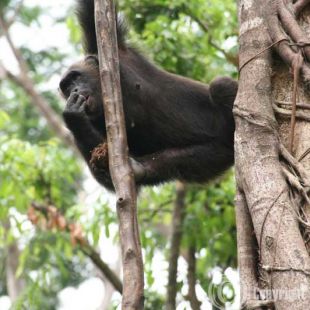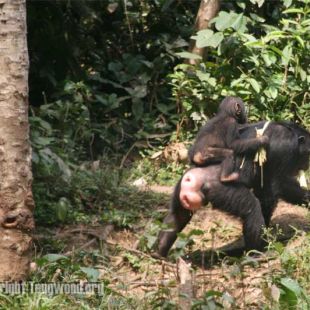Habitat and Diet
The habitat of the chimpanzee is African forests. While a chimp will cross patches of grassland, their home is in the trees. Every day, chimps travel through the forest on a daily foraging foray. They eat mostly fruit, but are able to utilize many other forest resources, especially in the dry season, when fruit is scarce. Chimpanzees have been known to hunt, and will readily eat meat. In fact, male chimpanzees have been observed to carry out cooperative, organized hunts as a group, with distinct strategies for catching their prey (see a link about chimps hunting). One recent study observed chimps hunting with sticks, with which they impaled bushbabies in holes in the trees using spears! Chimps have also been observed to self-medicate, using plants native to their habitat. Some chimp populations have created their own versions of tool use, utilizing their environment in a way that can be defined as an early form of what we call 'culture'. If a chimp population goes extinct, this knowledge will also be lost.
Chimpanzees and gorillas are nest builders. At night, both of these great apes climb into the trees and make nests to sleep in. The nests are built by folding in branches and packing them with available vegetation. Sometimes these nests can be very elaborate. Usually they are high in the trees, but large male chimps and gorillas will sometimes build nests on the ground. Babies sleep in the nest with their mothers. Scientists are able to study great ape social structure by looking at nest sites. From a nest site, you can tell things such as how many chimps may be in the group, how old the nest is, and where the chimps prefer to build their nests. Samples of hair and feces for DNA testing can also be collected from a nest, aiding in information about that particular group and the species in general.

























